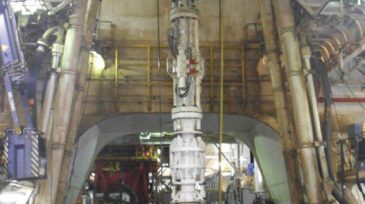Technology
AI is transforming oil and gas, but the real change will come from young professionals (YPs) who bridge technology and field expertise. By leading pilots, building networks, and challenging old assumptions, YPs can drive the industry’s digital transformation from within.
PE Ltd.'s software will allow students and faculty to work directly with modeling technologies and build real-world, job-ready skills.
Founding dean of Missouri S&T’s Kummer College, James D. Sterling, sat down with Joshua Schlegel, associate professor and associate chair of nuclear engineering and radiation science, to discuss why nuclear power is making a comeback and what its resurgence means for the future of energy.
-
More than a decade ago, perforation cluster spacing was designed up to 700 ft in Barnett and Bakken plays. Today, the spacing is as close as 15 ft apart in Eagle Ford and DJ Basin and operators are optimizing fracture spacing for achieving higher initial production rates.
-
Along its journey to full-automation, the US drilling sector is facing a series of important crossroads that will determine what the so-called “rig of the future” really will be.
-
Well cement is cheap but there are questions over its reliability when it comes to stopping methane migration. A Houston-based blowout specialist is pushing for an alternative.
-
Pemex E&P's general director talks about the role of technology in the company's recent developments and shares his career advice to young professionals in the industry.
-
What is pipeline integrity management and what are the crucial components of a well-rounded integrity management system?
-
The Energy East Pipeline involves the conversion of an existing TransCanada gas pipeline to oil service, as well as the construction of 1500 km of new pipeline. With a capacity of 1.1 million B/D, it will eliminate the need to import foreign crude oil to refineries in Quebec and New Brunswick.
-
Successful and commercial unconventional plays benefit in many cases from midstream activity that occurred decades earlier. In this article, authors look at the evolution of resource plays in light of the availability of midstream infrastructure.
-
From trenchless construction for environmentally sensitive areas to heated pipelines which reduce associated upstream and downstream facilities, innovation in pipeline technology is improving operating efficiencies.
-
The unique properties of deepwater formations pose significant challenges to the capabilities of conventional drilling rigs. Using automated drilling equipment, including MPD, efficiency and cost savings can accompany safety.
-
Production of formation sand is one of the oldest problems in oil and gas industry. Achieving maximum well productivity without excessive sand production or plugging requires sand control that depends on the type of the reservoir and production technology.













